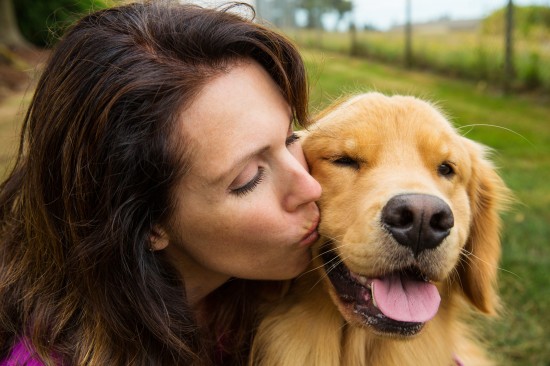
Problems between dogs and their care givers arise from a multitude of reasons, most of which could be easily avoided. Inconsistent training, expecting too much too soon, harsh or inexperienced handling, and negligence are responsible for the majority of ongoing canine behavior problems. Understanding your dog will help.
Pet owners who take the time to become knowledgeable about their pet’s needs, and who build a solid foundation of love and trust with their pet, rarely experience serious behavior problems once training is complete.
Pet owners who fail in these areas, however, are likely to instill fear, confusion, lack of confidence, and even depression in their pet. Reading this Savvy Dog Lover article will go a long way in helping persons to understand the unique needs of their canine companions.
A Dog’s Unique Personality
Dogs are a lot like most people. They may goof now and then, but they invariably try and do their best. They truly want to please their care givers. A sensitive dog owner will realize this.
Sensitive dog owners will also realize that, like people, some dogs catch on more quickly than others; others are slower to learn. Some dogs are also more easily distracted. Some are naturally more aggressive, others more timid – requiring extra patience and encouragement during training.
Understanding your dog is vital, for both you and your dog. This is especially true when it comes to training.
Guidelines for Successful Training
There are ten important factors to remember if you desire training success:
1.) Patience is critical. Forcing a puppy or young dog to do more than he is capable of doing, losing control and yelling or striking out at the dog, or ending a training session on a sour note all sabotage training success and build confusion and mistrust in the dog.
2.) Keep training upbeat and fun for your dog. Sessions should begin and end with success. Start the session out by “reviewing” a feat or accomplishment your dog already does well. End the session in the same way, with plenty of praise.
3.) Structure is important, so be consistent. Training sessions should be performed regularly. Sessions should be timed to end while your dog is still enthusiastic and attentive. They should last about 15 minutes for puppies, 30 – 40 minutes for adult dogs. Sessions should also be conducted in as distraction-free a location as possible. That means no audience of onlookers for the sake of showing off your “skills” as a trainer.
4.) Be lavish with praise. Reward each success with plenty of verbal and physical praise. Not only will this build confidence in your dog, and create a stronger bond between the two of you, but it will make him even more anxious to please you when learning other new feats.
5.) Never call your dog to you for disciplinary purposes. This will only make your dog apprehensive and reluctant to approach the next time you call. Instead, order him to “sit,” and “stay,” then approach him.
6.) Never over-discipline. Once a dog understands a command but refuses to obey, reasonable physical discipline may be appropriate. Discipline should never be violent or executed in anger; it should always be imparted in a calm, controlled manner.
7.) Don’t lock your dog into shame cycles. When a dog refuses to comply, verbal and physical discipline should be controlled, and reasonable. Ongoing verbal reprisals and scolding when a dog bungles an assignment is ineffective and will only serve to strip confidence. It will discourage your dog and make him dislike training sessions altogether.
8.) Understand that learned behavior takes time. Just because a dog learns the “sit” command on Monday while in his own backyard, that does not mean he will be able to carry the lesson over to Friday’s day at the beach. Dogs do not instinctively apply knowledge learned in one setting to another quite different setting. He must be taught how to do that; it takes repetition over a period of time, and patience.
9.) Teach commands in steps. For instance, before a dog can effectively learn the “lay down,” command – which is, in actuality, a three-step command – he must first learn the commands “sit” and “down” (or lay down). Break multi-tasked commands into simple steps.
10.) Factor #1 bears repeating. Patience is critical!
By working with your dog following these guidelines you will soon discover the essence of each. Patience combined with consistency, love, and praise for accomplishments well done are the most important factors of all when it comes to building trust in your dog, and assuring training success.
Other training tips, aids, and products for pets can be found online at www.savvy-dog-lovers.com.
© 2006 Lori S. Anton
Savvy Pet Editor
Published writer and dog lover, Lori Anton, has been writing for nearly 30 years. She is founder and editor for Writers Write Now, offering original professionally written content, and SEO content for web sites; visit Writers Write Now. Lori lives in rural Wyoming with her husband, Jeff, and their diabetic canine companion, Muffy.
Lori is also Savvy Pet Editor. Savvy Dog Lovers web site offers valuable information on pet health, care, and training, as well as top pet products. Visit Savvy Dog Lover. Savvy Dog Lover – where the best bones are buried!
 How Long Will It Take For A Dog To Bond With A New Owner?
How Long Will It
How Long Will It Take For A Dog To Bond With A New Owner?
How Long Will It
 Keeping Herding Dogs Happy
Keeping Herding D
Keeping Herding Dogs Happy
Keeping Herding D
 Understanding Silent Heat In The Bitch
Understanding Sil
Understanding Silent Heat In The Bitch
Understanding Sil
 Mobile Grooming Services in Florida
Mobile Grooming Services in Florida
Grooming y
Mobile Grooming Services in Florida
Mobile Grooming Services in Florida
Grooming y
 Is The Catalan Sheepdog A Good Choice Of Pet?
Is The Catalan Sh
Is The Catalan Sheepdog A Good Choice Of Pet?
Is The Catalan Sh
Copyright © 2005-2016 Pet Information All Rights Reserved
Contact us: www162date@outlook.com